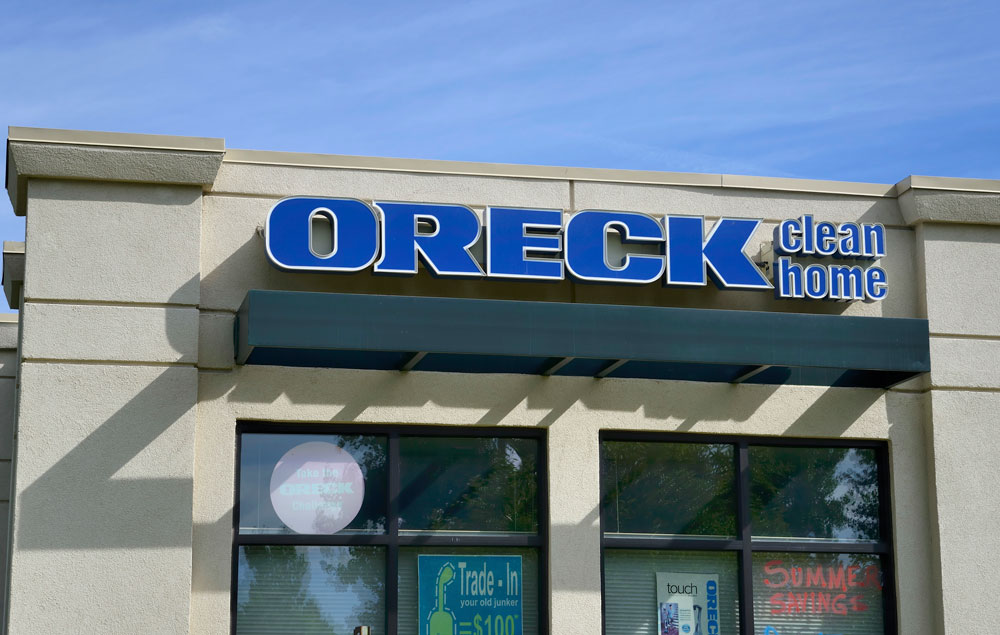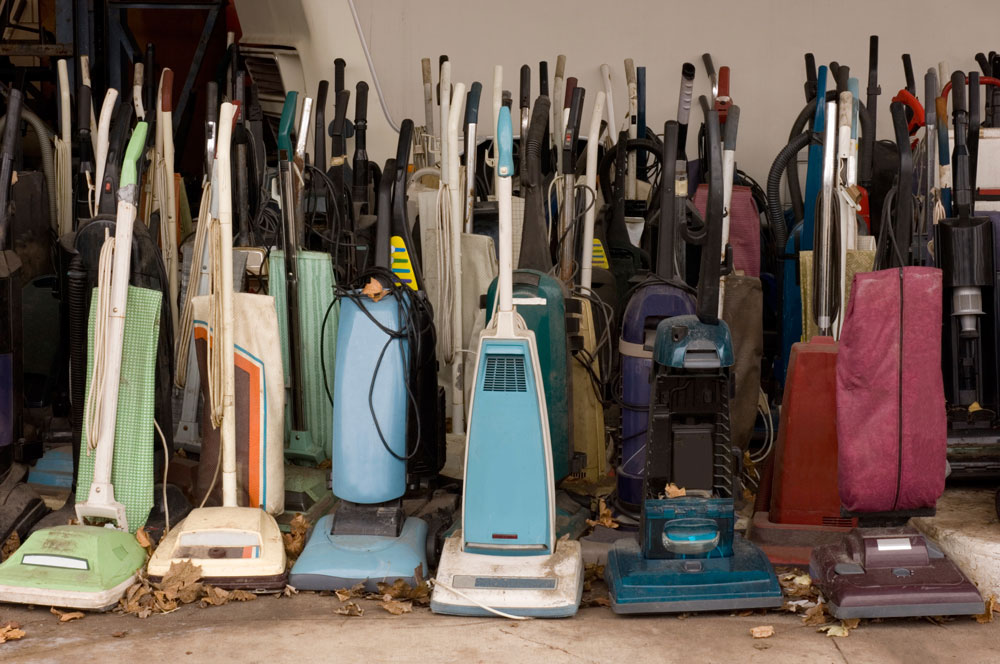Wasp Barcode Technologies: The Barcode Solution People
3 Takeaways From the Demise of Oreck

“The most respected name in vacuum cleaners.” “Built to last!” “The leading manufacturer of vacuum cleaners made in America and sold worldwide.” Now? Bankrupt. Oreck Corp., along with over 8,500 businesses, filed for Chapter 11 bankruptcy in 2013. The medium-sized, Nashville based manufacturer makes and sells upright vacuum cleaners and cleaning products that your mother and grandmother love… or used to love. Founded by David Oreck in 1963, internal struggles regarding the direction of the company led to a rapid demise. Let’s take a look at the underlying issues inside of Oreck that can be useful for your own small to medium-sized enterprise.
- Controlling Your Distribution
Oreck himself once
said, “If you don’t control your distribution, you’ll be controlled by your distribution.” The corporation’s original business model was to distribute and sell its vacuum cleaners through a chain of their own 96 stores instead of through other retail outlets. Oreck officials admitted that the struggle of keeping up with the competition, due to their distribution of vacuum cleaners, took longer than
expected. Would Oreck have a future without all the added costs of direct sales to the public, costs such as real estate, store fixtures, leases, salespersons, warehousing and shipping. Don’t forget the cost of the management layer devoted to the retail sales efforts.
Furthermore, reports exposed that former CEO Doug Cahill left the company in March of 2013 due to his disagreement with the wholly owned retail distribution approach. Regardless, there was an issue with decreasing product margins that Oreck could not solve. We also know when the company began to sell products through Costco, Home Depot, Sears and so on there was immense pressure to drop their prices and only provide lower-end vacuums. We cannot help but wonder whether Oreck would have filed bankruptcy if it had abandoned its commitment to retail locations and moved forward with sales directly to customers, or if they were already in too deep. As you move forward with your enterprise, we would like you to consider a few key points to avoid Oreck’s distributional demise.
How do I control my distribution? Select methods that will positively affect your
bottom line while matching your customer’s desires at the same time.
Before you move strictly into distribution, become well aware of one concept:
- Consumer interest – What are your customer’s habits, affiliations and interests? How can you get in front of your customer in a place they are already looking? Once you understand where your target audience is looking, you can understand where to distribute.
Now consider the following:
- Ease of entry – What obstacles influence distribution through this channel? What costs? Evaluate your financial risks.
- Volume potential – What factors mitigate barriers to entry? Could the potential gains outweigh barriers to entry?
- Pricing Strategy – What effect does this distribution channel have on your profit margin? Use this helpful margin tool to evaluate.
And if all else fails…
- Start from scratch – After exhausting all possible distribution channels, you might consider making your own supply chain.

- Manufacturing vs. Manu-fail-uring
In a perfect world, all goods and services would be produced in America, the American way. Oreck attempted to achieve this and manufacture all vacuum cleaners in its Cookeville, Tennessee plant with about 150 workers. Can a manufacturer of small products afford 100% domestic production costs? There are many pros when it comes to manufacturing in the US, but there are also obstacles that Oreck may have turned a blind eye to. View this
list to understand the best manufacturing method for your small business. Was Oreck aggressive with cost management strategies? Did it explore all manufacturing options? One might argue that the demise of Oreck lay within the location the vacuums were manufactured, or simply that the company had underlying issues with information between the service center and corporate offices. Wherever your enterprise decides to manufacture, keep in mind a very important concept: People working together in harmony to get to “best answer” or “best response. Learn how to create internal sales masterminds together.
How do I avoid a manu-fail-ure? If manufacturing expenses remain constant, what other efficiencies might facilitate leaner operations?
Two words:
Inventory control.
- Budget for returns. Customer service is one of the most, if not the most, important aspects in an organization’s success. You must understand that your product will malfunction, someone will not be satisfied and someone else will just want a different product. It is courtesy to pay the shipping on returns for customers, and it is courtesy to service your products. End spreadsheet nightmares, stop wasting time and consider asset software.

- Sell Your Product, Not Yourself
For a while Oreck thrived on CEO pitchmen. Such appearances allowed the company to create an iconic brand that more than
70% of the consumers recognize, despite having only a 5% share of the upright vacuum market ten years ago. CEO pitchmen might have been able to get the job done ten years ago, but today customers are not blind to such marketing tactics because in the end, they are not paying for the CEO, they are paying for the product. So what went wrong? As these commercials often seem to revolve around the spokesman rather than the product that would only work for so long for Oreck’s upright-bagged vacuums when more than 80% of upright vacuums were sold bag less a decade later. The Oreck television commercials have become outdated. We’d like to know the company’s return on marketing investment and whether they fully explored all alternatives.
Making Marketing Work:
Continually evaluating marketing efforts is critical to creating a sustainable brand in the marketplace. Information inundation is inevitable; standing out from the crowd is optional. How well can your customers see you? Every business is different.
Competition is brutal, you must remain ever vigilant and be prepared to change with the times.
Whether you’ve just started a business or you’ve been running a business for decades, you’re all aboard the same ship. The question is, how do you know if you’ll sink or swim? The above lessons from Oreck’s demise are great learning tools and helpful reminders for those of you who are experiencing similar issues, or simply trying to avoid such issues all together. At the end of the day, you have to take care of your enterprise, regardless of the success or failure of those around you. Instead of becoming one of approximately 8,500, become one that will control
your distribution, make
your marketing work and sell
your product.





